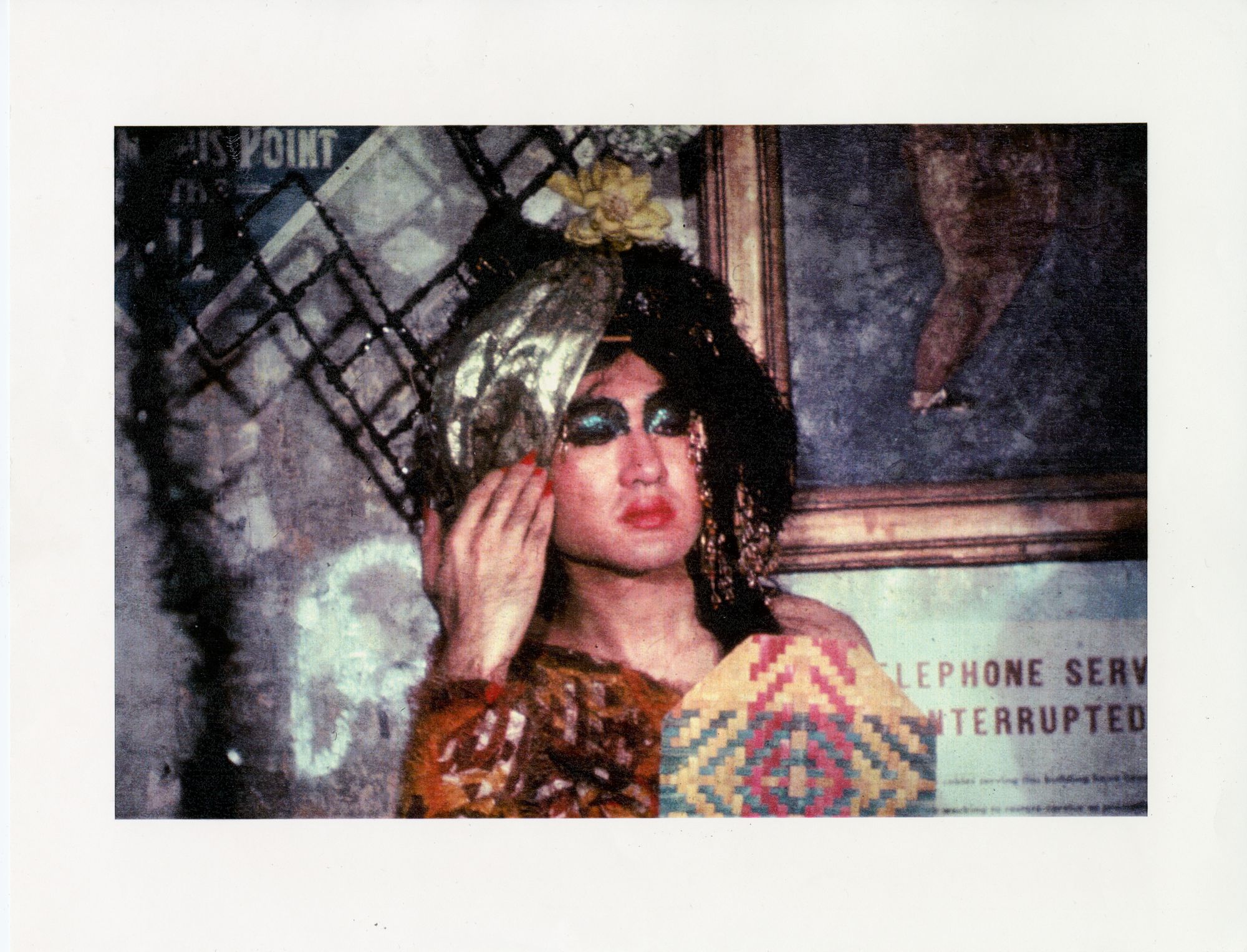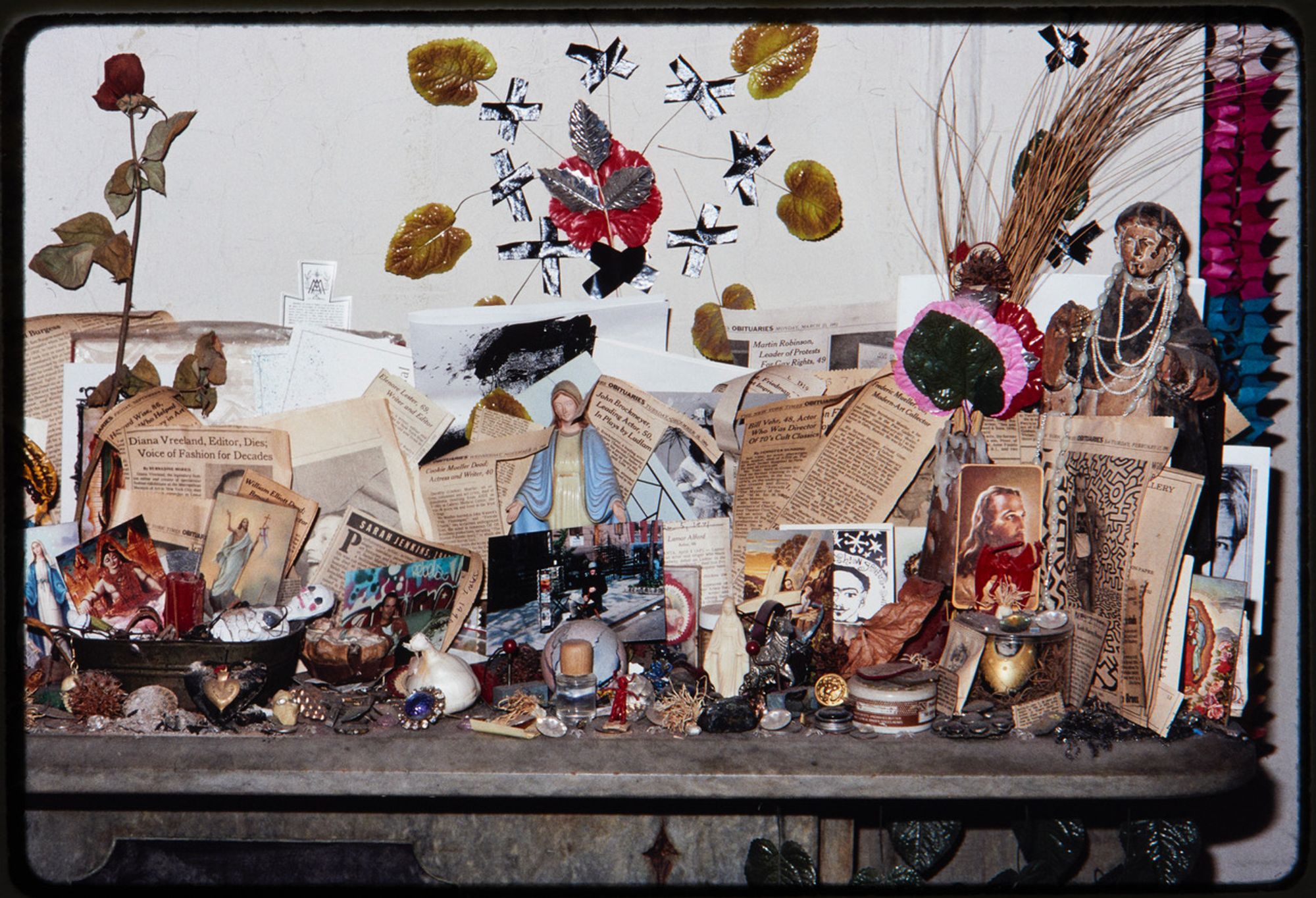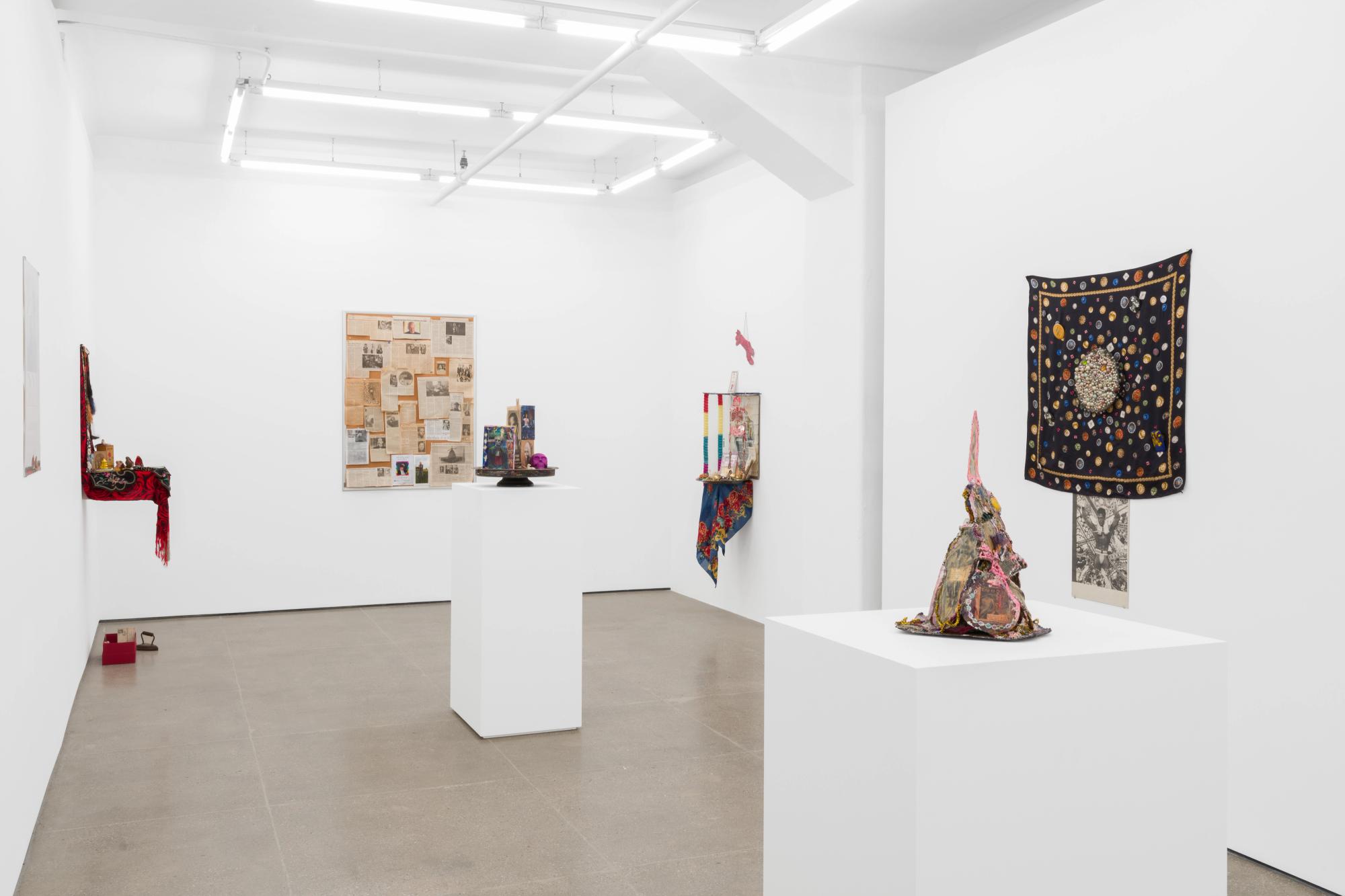
Agosto Machado, Untitled (Altar)
Agosto Machado, Untitled (Altar)
Mixed-media installation, with plastic, paper, metal objects, photographs, candle, jewels, religious objects and Oscar de la Renta scarf; L-R: Our Lady of Guadalupe, Tim Gault, Bern Boyl, Ellen Stewart, Marsha P. Johnson, Minette, Chris Kapp, Ethyl Eichelberger (photograph by Peter Hujar), Steve Lott, Michael Arian, John Albono; Pins: Langston Hughes, James Baldwin, Maya Angelou, George Floyd, Rosa Parks, Jackie Robinson, Malcolm X, Jean-Michel Basquiat, Black Lives Matter
7.5 × 16 × 17 inches
















